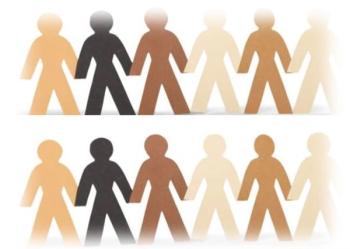
Training Eyes after Stroke-Induced Hemianopia Changes the Brain
NEW YORK -- Increasing brain activity is the key to improving eyesight by visual training for stroke patients with hemianopia, researchers here found.
NEW YORK, Aug. 14 -- Increasing brain activity is the key to improving eyesight by visual training for stroke patients with hemianopia, researchers here found.
In a small study, daily training exercises on a computerized device increased activity in visual processing and other areas of the brain within a month, as measured by functional MRI, Randolph S. Marshall, M.D., of Columbia here, and colleagues, reported online in Neurorehabilitation and Neural Repair.
Although visual field expansion was not expected or found within the month-long study period, the findings confirm that the prerequisite brain changes occur, they added.
Visual restoration therapy, using a computerized device made by NovaVision, is cleared by the FDA to treat partial visual field loss after stroke or brain trauma.
The home-based therapy has been reported in previous studies to expand the visual field by repetitively stimulating the borderzone around the blind spot over about a six-month treatment period.
"We hypothesized that if the therapy is to work, brain activity associated with detection of stimuli in the trained portion of the visual field, must necessarily change as part of the training process," they wrote.
Similar brain plasticity effects had been shown in animals and in visual learning studies of people without brain injury, but not in the stroke-induced hemianopia targeted by the device or brain trauma, they noted.
So to test this mechanism, the investigators examined functional MRI scans of blood oxygen level dependent brain activity during a task that simulated the therapy at baseline and after one month of therapy.
The study included six right-handed patients who had hemianopia from a left occipital-temporal ischemic or hemorrhagic stroke at least three months prior to enrollment.
The four men and two women ranged in age from 35 to 77, and all had stable visual field deficits before the study began.
The participants did therapy at home twice daily for 20 to 30 minutes, six days a week. This included resting their chin on a frame 15 inches from an LCD with their eyes fixated on a central point while watching for a block in their peripheral vision to change color.
These stimuli were primarily in the visual borderzone within 4 of the edge of the blind field, but 20% appeared randomly in the seeing and blind fields to reduce predictability. Patients clicked a computer mouse to respond.
Using a computerized map of each patient's visual field at baseline, the researchers analyzed brain activity. They found that brain activity during detection of stimuli in the visual borderzone increased significantly after therapy.
The greatest increases were seen in the right occipitotemporal region (P=0.0001), middle temporal region (P=0.000002), right dorsolateral prefrontal cortex (P=0.0002), bilateral medial frontal cortex (P=0.000012), bilateral basal ganglia (P=0.00403), and right posterior parietal cortex (P=0.000014).
There was some "minor variability" in the activity pattern between patients, but regional patterns were similar across the group, Dr. Marshall and colleagues wrote.
Any pattern would have supported a training-specific change in brain activity, but "the fact that several identified regions are involved with visual processing and visual attention lends support to the neurological specificity of the findings," they said.
"Activity in brain regions outside of primary visual areas has been ascribed to more broadly distributed visual learning or attentional networks feeding back on primary visual cortex," they added.
The functional MRI changes also correlated with an average 18.6 milliseconds faster response time to visual stimulation in the borderzone compared with unaffected areas (P=0.02).
However, there was no statistical interaction between brain activity increases and gain in response time, and none of the patients had an expansion of their visual field during the study.
The researchers noted that visual field improvements often occur at a later point in therapy and were not part of the study endpoints.
They also acknowledged that the study was small and the findings could not be extrapolated to a larger population.
Newsletter
Enhance your clinical practice with the Patient Care newsletter, offering the latest evidence-based guidelines, diagnostic insights, and treatment strategies for primary care physicians.






























































































































































































































































































































